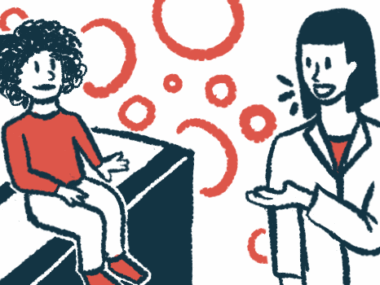Ohio State Advancing Directed Gene Therapy in First-in-human Trials
Written by |

In ongoing and planned clinical trials, The Ohio State University College of Medicine is working to advance a directed gene therapy — one using direct infusion and not a viral vector — to help people with aromatic L-amino acid decarboxylase (AADC) deficiency and other neurological disorders that remain incompletely treated.
One such trial, still recruiting in Ohio, has already recorded significant improvements among children with AADC deficiency, with four of the treated patients now able to sit without support.
“We have a large portfolio of active, and soon-to-be active, first-in-human gene trials of direct infusion for gene therapy and treatment of Parkinson’s, Alzheimer’s and Huntington’s diseases as well as AADC deficiency and multiple system atrophy,” Russell Lonser, MD, chair of the department of neurological surgery at The Ohio State University College of Medicine and co-director of the Ohio State Neurological Institute, said in a university press release.
The ongoing gene therapy research is supported by a recent $14.6 million award from the National Institute of Neurological Disorders and Stroke (NINDS), part of the National Institutes of Health (NIH). The funding will ensure that Ohio State is a major player in directing gene therapy, Lonser noted.
In AADC deficiency, a faulty DDC gene leads to reduced activity of AADC, an enzyme critical in the production of dopamine and serotonin, two neurotransmitters that function as messengers between nerve cells in the brain and the rest of the body.
Defects in the AADC enzyme ultimately lead to lower production of these neurotransmitters, causing symptoms that include intellectual disability, developmental delays, muscle weakness, abnormal movements, seizures, and anxiety and depression. Oculogyric crises, involuntary upward movements of the eyes due to spasms in the eye muscles, also are common — and last for longer periods, sometimes hours, as the disease progresses.
Gene therapy for AADC deficiency aims to replace the defective DDC gene with a healthy copy, which is expected to restore AADC production and normalize dopamine and serotonin levels.
Lonser, and colleague Krystof Bankiewicz, MD, a professor of neurological surgery at the Ohio State College of Medicine, have developed a real-time MRI imaging technique to deliver an investigational AADC gene therapy directly to the substantia nigra pars compacta and the ventral tegmental area — two areas of the midbrain that contain dopamine-producing nerve cells.
“This work provides a framework for the treatment of other human nervous system genetic diseases, said Bankiewicz. “It’s our hope that this will be [the] first of many ultra-rare and other neurologic disorders that will be treated with gene therapy in a similar manner.”
Of note, this approach is different than the gene therapy candidate PTC-AADC by PTC Therapeutics, which targets another area of the brain called the putamen. That brain region is involved in motor and non-motor functions — such as language, emotional processing, and chronic pain — and is directly impacted by the loss of dopamine production.
The directed gene therapy here is currently being evaluated in a Phase 1 study (NCT02852213) involving about 31 children with AADC deficiency, ages 4 and older. The trial is funded by the NIH and conducted by Ohio State and the University of California San Francisco. It is scheduled to run through January 2028.
Early results showed that three months after infusion into the brain, almost all of the treated children no longer experienced oculogyric crises — a benefit that was sustained for at least two years. Treatment was generally well-tolerated and improved motor function and quality of life, according to researchers.
After one year, four patients gained the ability to sit without support, six gained head control, and three reached and grasped with their hands. Improvements in speaking abilities also were noted, and caregivers reported better mood and fewer feeding and sleeping problems.
“Remarkably, the seizure-like episodes are the first symptom to disappear after gene therapy surgery, and they never return,” Bankiewicz said. “In the months that follow, many patients experience life-changing improvements. Not only do they begin laughing and have improved mood, but many are able to begin speaking and even walking.”
Alongside Ohio State, the advances in AADC gene therapy were supported by research teams at other academic institutions, including St. Louis Children’s Hospital and Nationwide Children’s Hospital, both in Ohio, Washington University, in Missouri, and the Medical Neurogenetics Laboratory, in Georgia.
In addition to NINDS, research funding was provided by foundational grants from The Ohio State University, the AADC Research Trust, and the Pediatric Neurotransmitter Disease Association.





